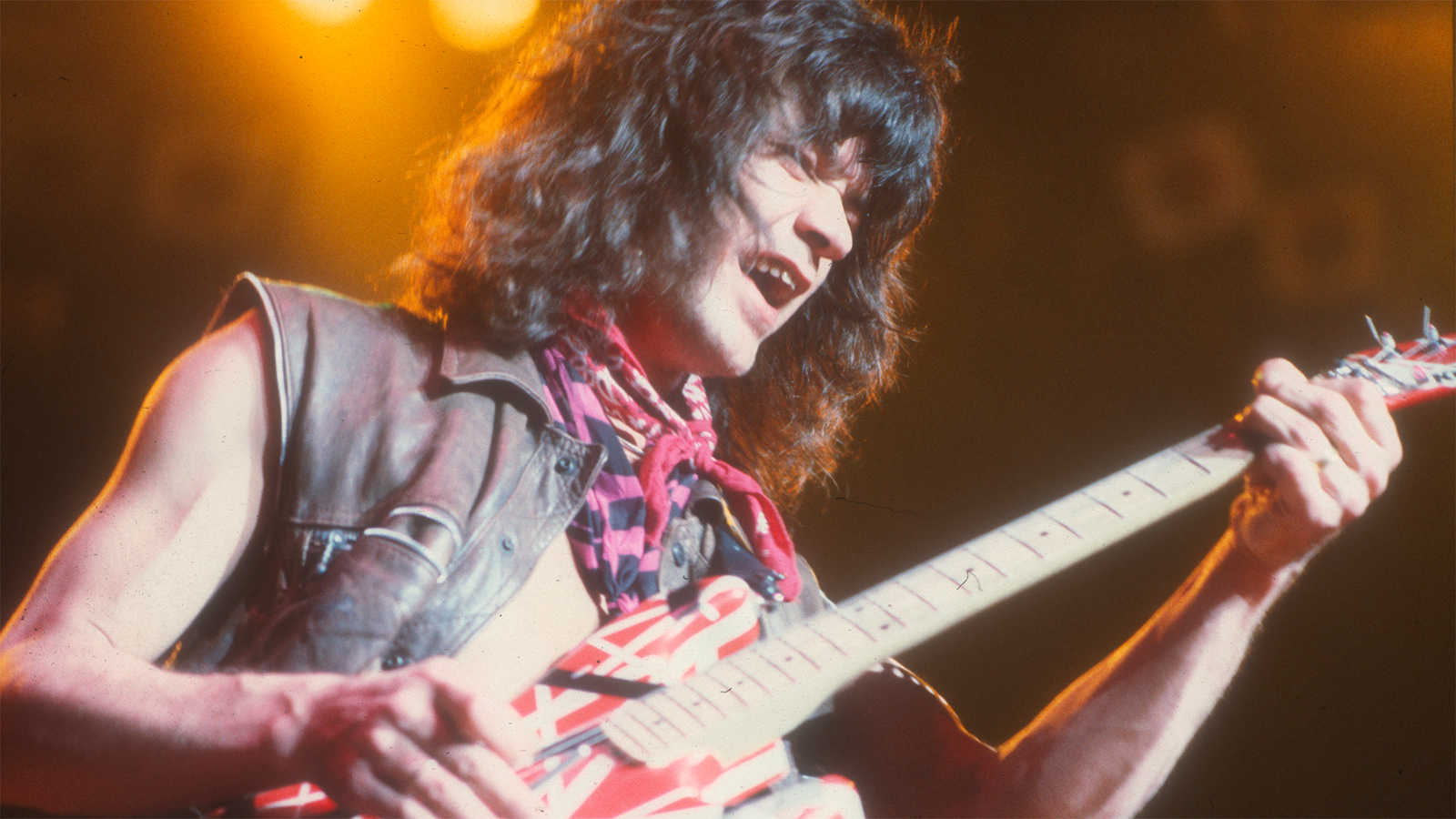Eddie Van Halen was more than a rock and roll superstar; he was a virtuoso, a maestro who deeply understood the intricacies and potential of the electric guitar, reshaping its role in modern music with a scientist’s precision and an artist’s vision. Through the fusion of technical ingenuity and an expansive musicality, Van Halen crafted a language of his own in the realm of rock music, introducing techniques that were revolutionary and that would go on to influence generations of guitarists. This exploration delves into the seminal contributions of Van Halen, examining the novel electric guitar techniques he pioneered and how he transformed the music scene with his visionary approach to the instrument.
RELATED: Learn to play like Van Halen with Chris Buono >
In the broader spectrum of the contemporary musical panorama, few individuals have marked as indelible an imprint as Edward Lodewijk Van Halen . Emerging in the late 1970s, Van Halen not only spearheaded a powerful musical ensemble but fundamentally altered the theoretical and practical approaches to electric guitar playing. This paper seeks to delineate the manifold contributions of Eddie Van Halen to the musical lexicon, highlighting the innovative guitar techniques he cultivated and employed to a seminal effect.
Historical Context
Van Halen’s debut in 1978 marked a significant departure from existing guitar techniques, fostering a shift towards a more technically involved and experimental approach to guitar playing. Through meticulous analysis of his early work, it is apparent that Eddie Van Halen sought to push the boundaries of what was conceivable with a six-stringed instrument. It was in this period we witnessed the genesis of groundbreaking tracks such as “Runnin’ with the Devil” and the now emblematic “Eruption”, which showcased a radical departure from traditional guitar work.
Technique Analysis: Fingertap Method
Central to Van Halen’s revolutionary approach to guitar playing was the introduction and popularization of the “fingertap” technique. This method involved the use of both the left and right hands on the guitar’s fretboard, facilitating the production of rapid, fluid note sequences that previously were not achievable with conventional techniques. Through an in-depth exploration of this method, one identifies a transformative impact on the prospective capabilities of the electric guitar as a solo instrument.
Instrument Modification and Technological Advances
Van Halen’s contributions were not confined to the domain of playing technique; he was also a prolific innovator in terms of instrument modification. By crafting the Frankenstrat, a custom-made guitar outfitted with carefully selected components designed to facilitate his intricate playing style, Van Halen epitomized the spirit of ingenuity. Further still, his ventures into the realms of amplifier modification and effects unit engineering demonstrated a forward-thinking approach to musical production that would leave a lasting mark on the industry.
Musicality and Harmonic Understanding
Beyond technique and innovation, a thorough analysis of Van Halen’s repertoire reveals a deep understanding of harmonic principles. Whether in the crafting of memorable riffs or the composition of delicate arpeggios, his work exhibits a high degree of musicality that merges technical virtuosity with an intuitive grasp of melody and harmony. Such understanding allowed him to construct musical pieces that were both complex and profoundly engaging, offering rich material for study and appreciation in the field of musicology.
Adaptation to Industry Changes
Van Halen‘s career spanned several transformative periods in the music industry. A review of his evolving style underscores a remarkable ability to adapt to changing musical tastes while retaining a foundational commitment to innovation and technical mastery. His dynamic approach to music making, observed through his collaborative ventures with vocalists David Lee Roth and Sammy Hagar, points to an artistic versatility grounded in a deep understanding of the rock genre and its numerous sub-genres.
Legacy and Influence
The passing of Eddie Van Halen on October 6, 2020, signaled the end of a remarkable career characterized by continual innovation and profound influence. His technical advancements in guitar playing have set new standards in the field, offering a rich reservoir of material for scholarly analysis and serving as a pivotal reference point for contemporary guitarists. It is through the continued study and appreciation of his work that the legacy of Eddie Van Halen finds its true measure, immortalized in the annals of music history as a true pioneer.
Conclusion
In summation, Eddie Van Halen stands as a pivotal figure in the history of electric guitar music. Through innovative techniques, instrument modifications, and a deep harmonic understanding, he expanded the horizons of what was possible with a single instrument. As scholars and enthusiasts alike continue to delve into his extensive body of work, it becomes increasingly clear that Van Halen’s contributions to the field are both seminal and enduring. It is incumbent upon the field of musicology to continue exploring the depths of his artistry, paving the way for future generations of guitarists to build upon this rich legacy of innovation and excellence.
